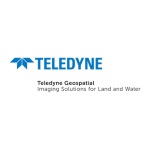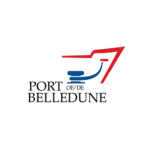
PORT WATCH: AI-Powered Underwater and Surface Monitoring
An open consortium to build an AI-powered system for underwater and surface monitoring.
Project Overview
Updated September 9, 2024
This project aims to create a consortium of organizations interested in building an AI-enabled dual use system for underwater and surface monitoring. Potential users of such systems include ports across the world, logistics and ocean transportation companies, Fisheries and Oceans government bodies, Coast Guard, Defense, Coastal First Nation Communities, and others. Interested organizations are welcome to contact the project team and join the consortium by emailing info@seafarerai.com.
The Problem
There is a global need to reduce underwater radiated noise in the ocean. In the north Pacific Ocean, underwater radiated noise has been doubling in intensity every decade for the past 60 years. Commercial shipping is one of the main contributors to this increase, and ship traffic and volumes are expected to increase with growing population and trade demands.
Underwater radiated noise can have a significant impact on marine mammals, including endangered species. Fisheries and Oceans Canada says underwater noise has been linked to a wide range of effects on marine species that rely on sound, including behavioral changes, habitat loss, increased stress levels and permanent injury or death.
With 17 port authorities and over 550 ports in Canada, the need for a solution is also being driven globally by the agreement on guidelines to reduce underwater noise reached in 2023 at the International Maritime Organization (IMO), of which Canada is a member.
How We Are Solving It
Led by SeafarerAI, in collaboration with the University of New Brunswick, Teledyne, and the Port of Belledune, this project will build an open technology architecture called Port Watch with initial proof-of-concept for the Port of Belledune and offered to the neighbouring First Nations, to provide an AI-powered, real-time monitoring of underwater domains, waterways and lands for port authorities.
The Port Watch Platform as a service (PaaS) is contained in a mobile, 20ft shipping container that will provide complete situational awareness of the underwater domain as well as the surface of the water. Its initial phase will allow teams to monitor and classify underwater noise and link it back to the “noise” polluter (e.g. shipping or construction companies). From this classification system, they will establish an ambient underwater radiated noise monitoring program and securely archive the data to understand local ambient underwater noise conditions and build a “noise” library. As part of the pilot, this resulting turnkey monitoring system will allow the Port of Belledune to achieve level 3 compliance with Green Marine underwater noise monitoring certification. The project will also solicit input from various government entities at the provincial and federal levels, specifically the Ministry of Transport, Environment, Fisheries and Oceans, Coast Guard, Navy, and the National Research Council (NRC)/Ministry of Innovation, Science, and Industry, and Indigenous Services Canada.
The consortium will provide neighbouring Indigenous communities with monitoring capabilities to deter illegal fishing in their territorial waters, a problem that threatens both the ecological health of these waters and the traditional livelihoods of their communities. With vast coastlines and rich marine resources, their territories are particularly vulnerable to the impacts of unregulated and unlawful fishing activities. Proper monitoring and enforcement mechanisms are essential to ensure the sustainability of these waters and protect the cultural and economic well-being of Indigenous communities while fostering cooperation and understanding among all stakeholders.
As part of supporting Canada’s global advantage in emerging marketing opportunities for AI, this project is via the adoption of AI as well as the growing focus on ESG responsibilities. The Port Watch system will provide a dual use, environmental and security monitoring capability while incorporating key port security factors, environmental monitoring and offerings to First Nations to protect their territorial waters. Ultimately, it aims to support the much-needed adoption of AI into the maritime industry and contribute to the global need for enhanced monitoring of the effects of climate change on the ocean and monitoring underwater critical infrastructure.



